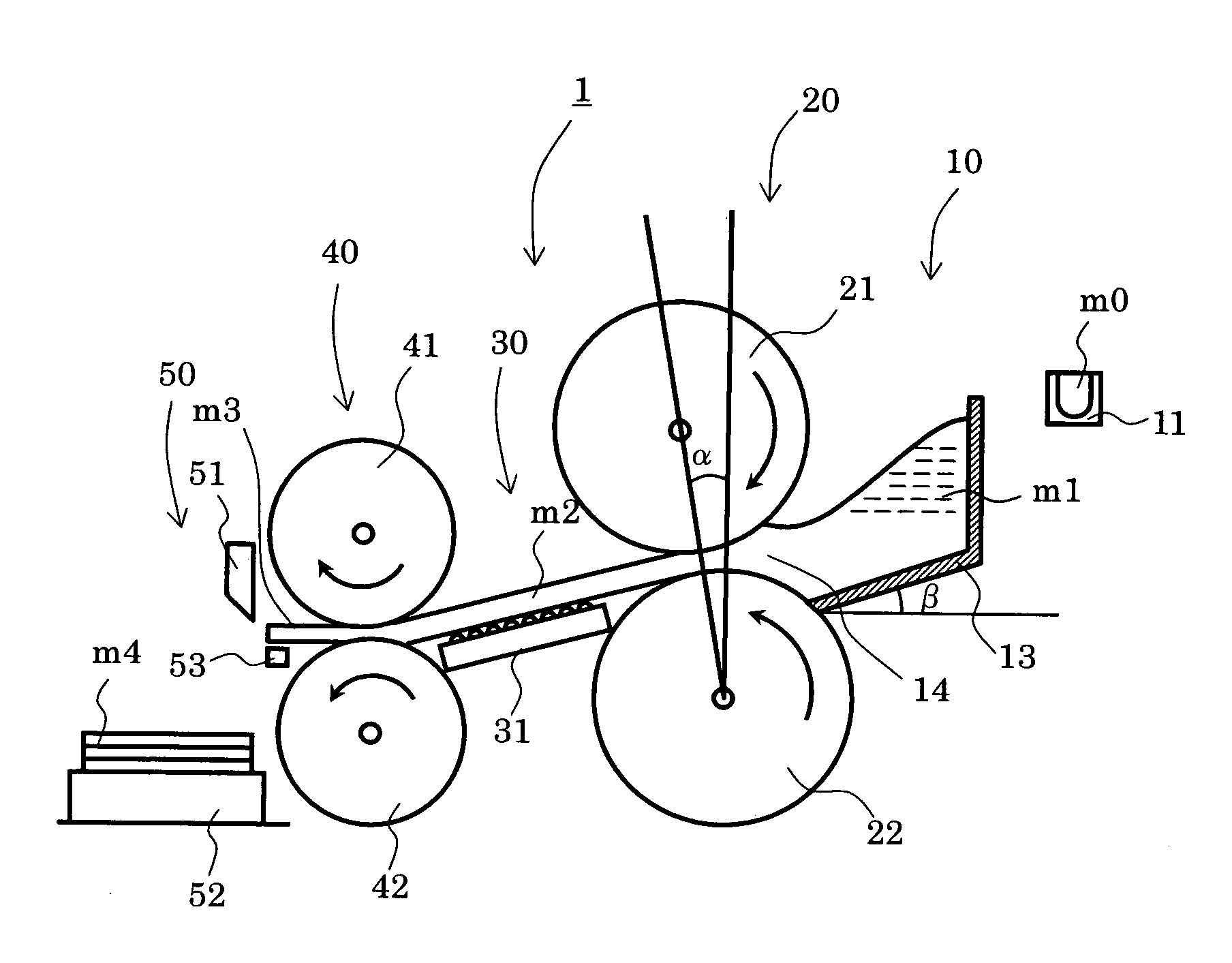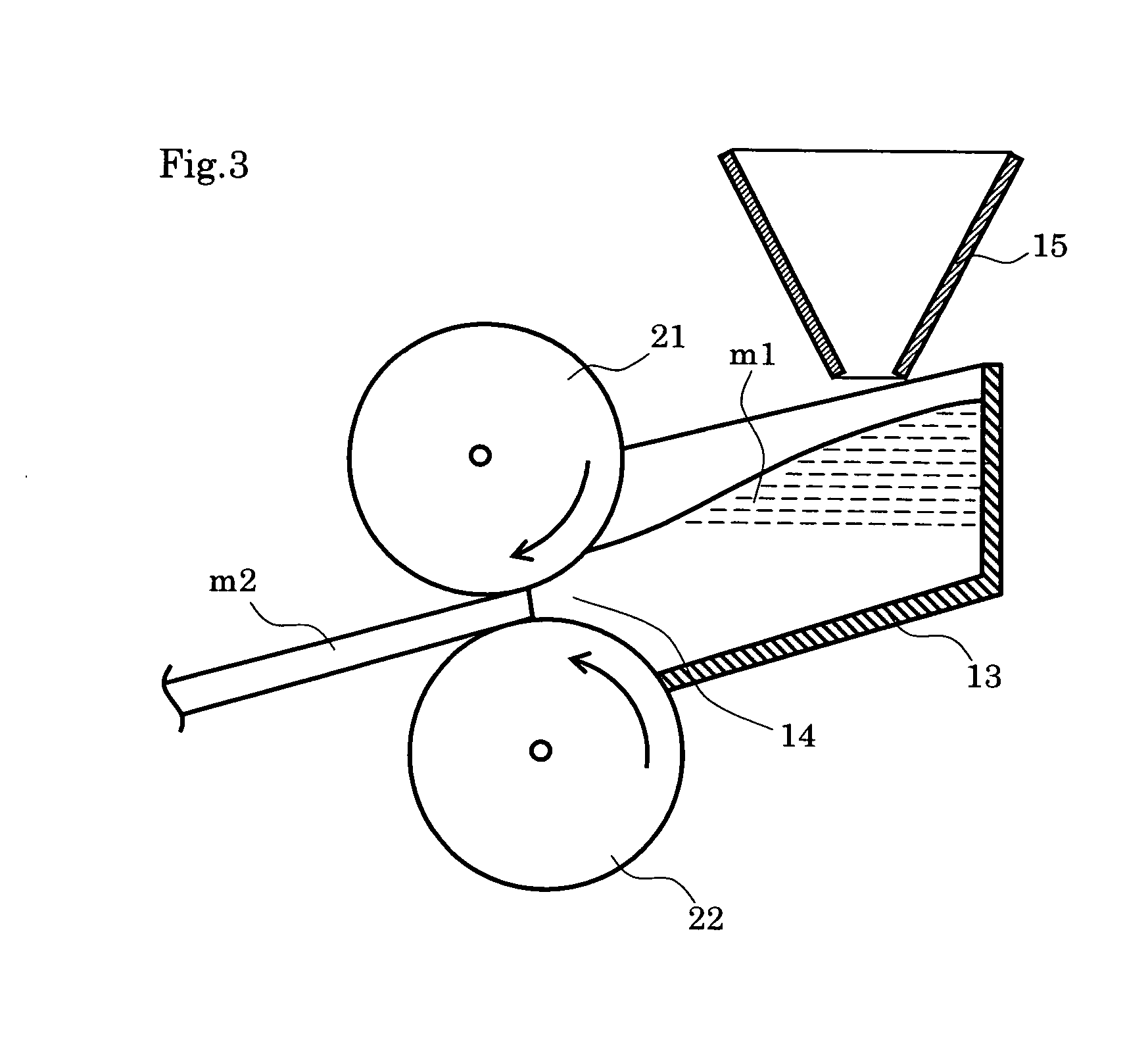Method and apparatus for producing thin magnesium based alloy plate
a technology of magnesium alloy and manufacturing method, which is applied in the direction of chemistry apparatus and processes, metal rolling arrangements, metal founding, etc., can solve the problems of inability to effectively manufacture products by plastic working, inability to use casting molds to mold magnesium, and inability to establish a presence in the market for applications of magnesium. , to achieve the effect of effective formation, excellent workability and deterioration of productivity
- Summary
- Abstract
- Description
- Claims
- Application Information
AI Technical Summary
Benefits of technology
Problems solved by technology
Method used
Image
Examples
first embodiment
Manufacturing Apparatus of First Embodiment
[0029]FIG. 1 is a schematic side elevational view showing the overall arrangement of a magnesium metal thin plate manufacturing apparatus of an embodiment of the present invention.
[0030] Reference numeral 1 in FIG. 1 denotes the magnesium metal thin plate manufacturing apparatus. The magnesium metal thin plate manufacturing apparatus 1 is approximately composed of a molten metal supply section 10, a casting roll section 20, a plate member conveying section 30, a rolling roll section 40, and a working section 50.
(Molten Metal Supply Section)
[0031] The molten metal supply section 10 is a mechanism for supplying a magnesium metal melted in a melting device (not shown) to the casting roll section 20 composed of a pair of rolls for casting the magnesium metal in the magnesium metal thin plate manufacturing apparatus 1, and the molten metal supply section 10 is composed of a crucible 11 and a molten metal bath 13.
[0032] The crucible 11 store...
example 1
[0075] A magnesium alloy (composition: AM 60) was melted at 640° C. using the apparatus shown in FIG. 1 and cast using the pair of casting upper and lower rolls 21 and 22 each having a roll diameter of 300 mm and composed of a copper alloy with a gap therebetween set to 2 mm at a roll peripheral speed of 40 m / min with a load per unit length in a roll width direction of 0.6 kN / mm. The temperature of the molten metal was 612° C. when it was introduced to the casting rolls. A plate member having been cast was conveyed using the conveyer belt conveying device and rolled by the rolling rolls, thereby a magnesium alloy plate member having a thickness of 2.5 mm was obtained. The plate member had a flat and smooth surface without ripple mark, interlayer exfoliation, center line segregation and surface roughness.
PUM
| Property | Measurement | Unit |
|---|---|---|
| temperature | aaaaa | aaaaa |
| angle | aaaaa | aaaaa |
| angle | aaaaa | aaaaa |
Abstract
Description
Claims
Application Information
 Login to View More
Login to View More - R&D
- Intellectual Property
- Life Sciences
- Materials
- Tech Scout
- Unparalleled Data Quality
- Higher Quality Content
- 60% Fewer Hallucinations
Browse by: Latest US Patents, China's latest patents, Technical Efficacy Thesaurus, Application Domain, Technology Topic, Popular Technical Reports.
© 2025 PatSnap. All rights reserved.Legal|Privacy policy|Modern Slavery Act Transparency Statement|Sitemap|About US| Contact US: help@patsnap.com



